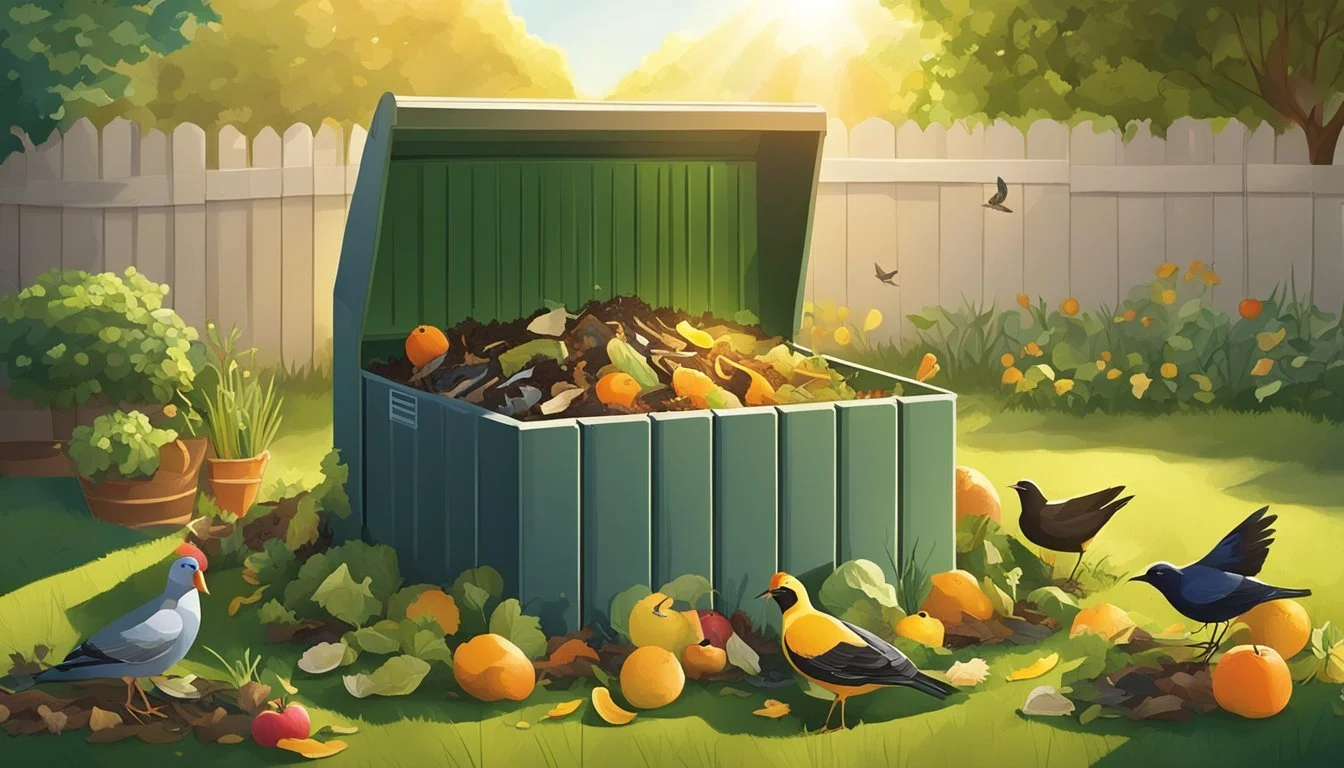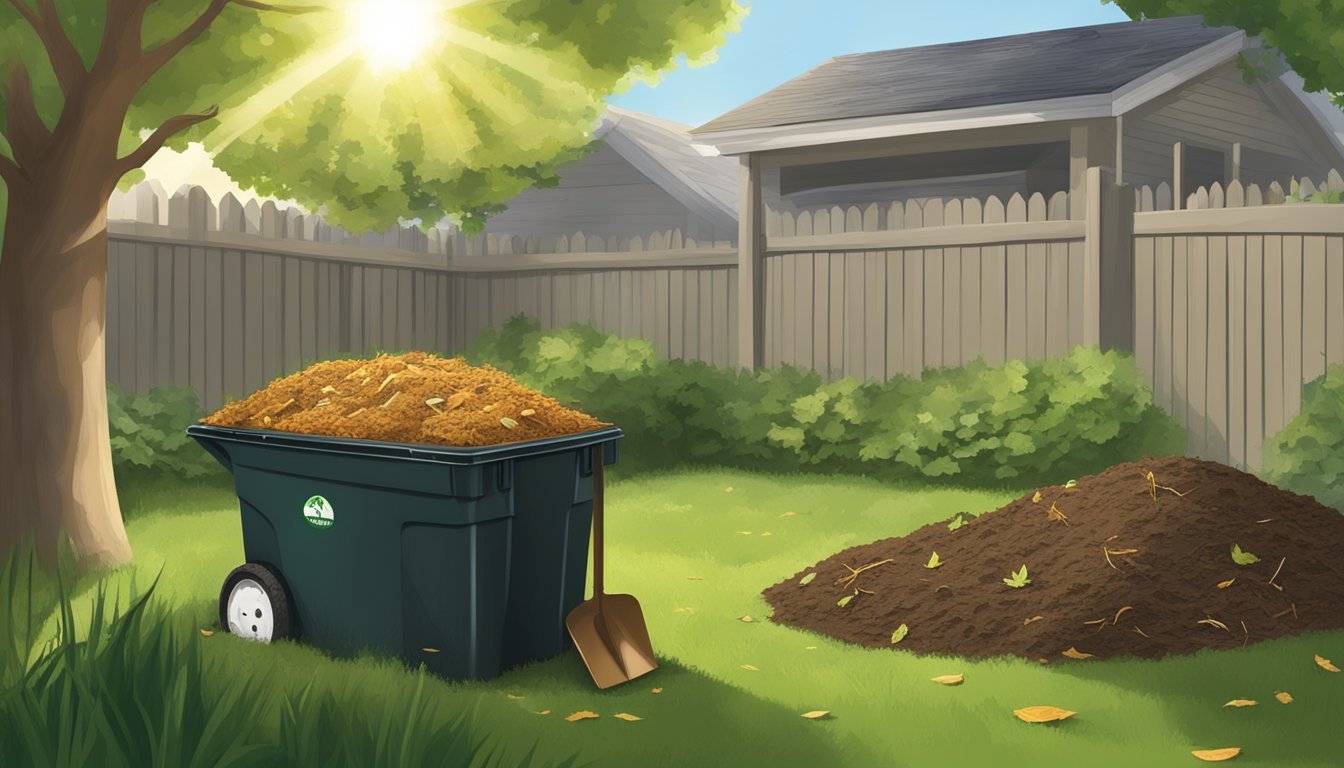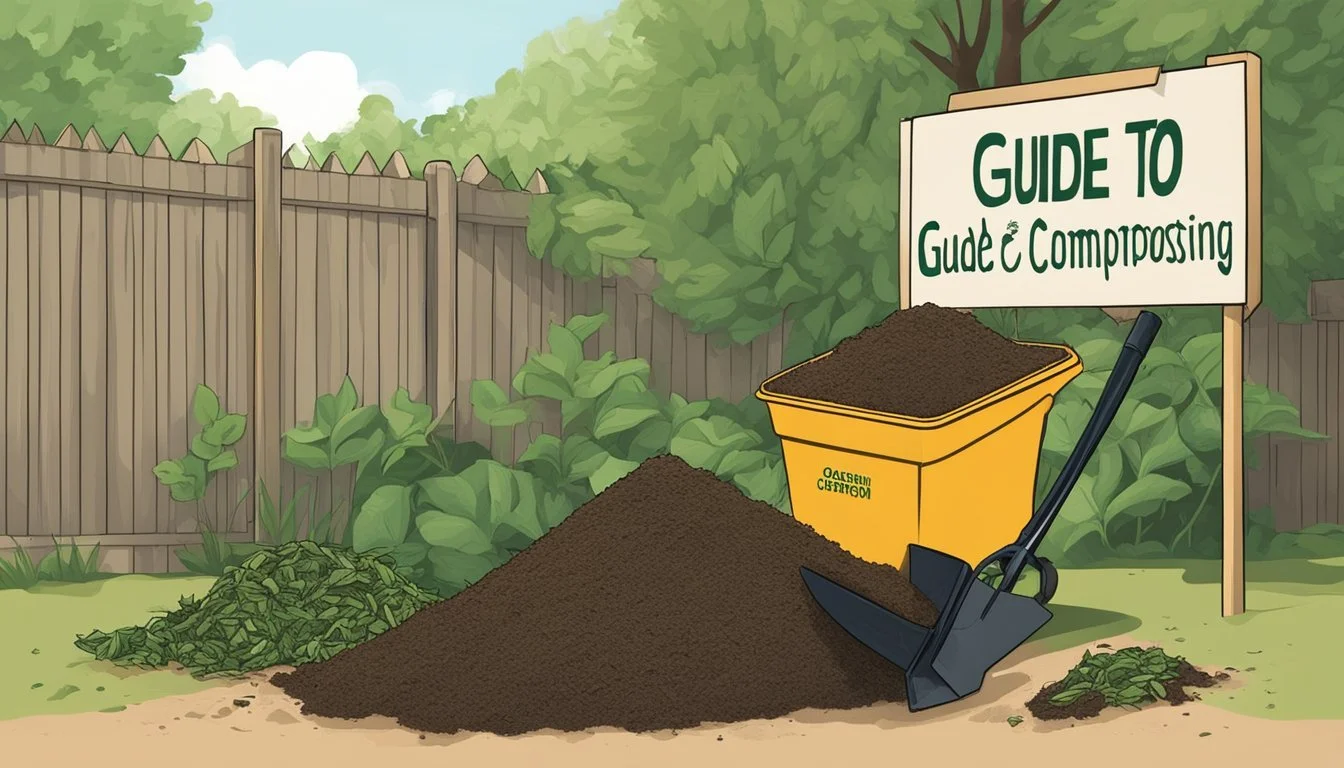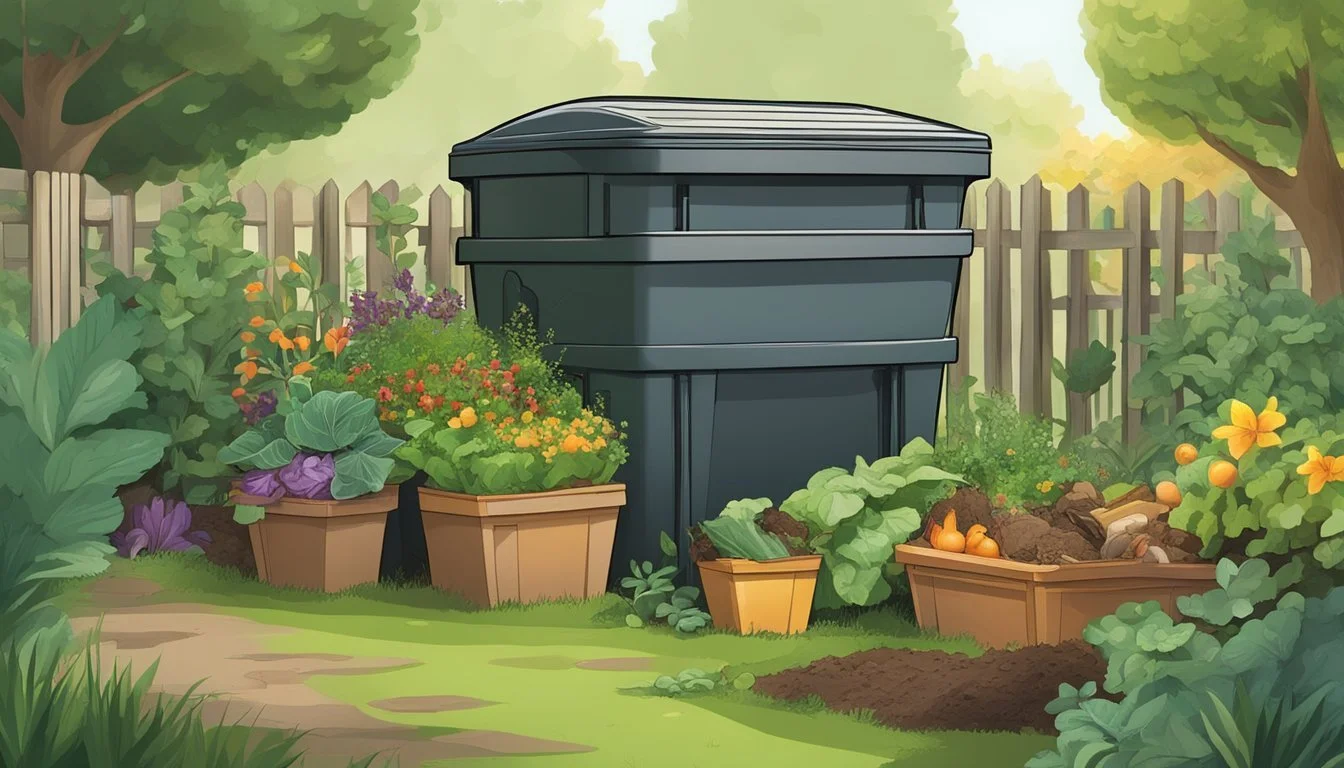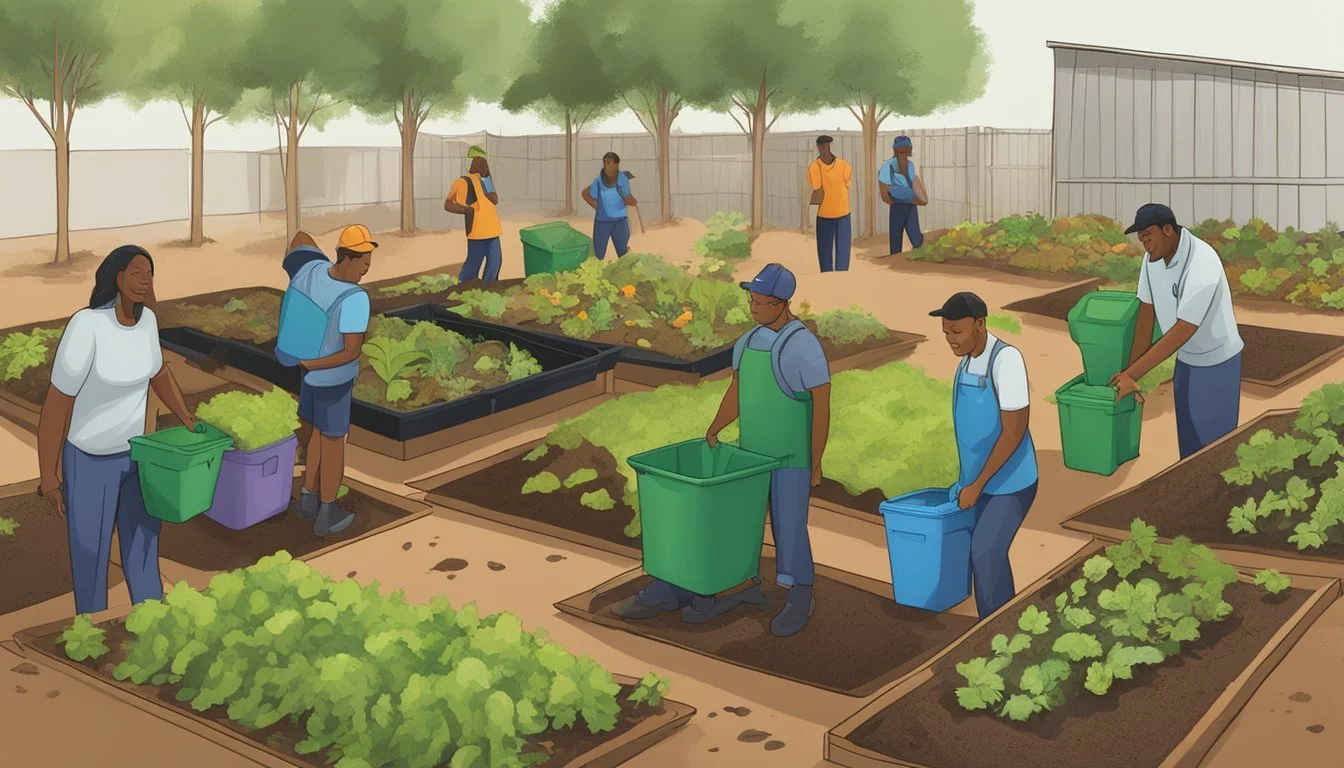Guide to Composting in Beaumont, TX
Essentials for Sustainable Waste Management
Composting is an effective method that individuals and communities in Beaumont, TX can adopt to manage organic waste and contribute to environmental conservation. This natural process transforms leaves, kitchen scraps, grass clippings, and other organic materials into a nutrient-rich soil amendment, perfect for enhancing garden health. The City of Beaumont recognizes the benefits of composting by providing yard waste recycling programs to its residents, encouraging the diversion of millions of tons of organic material from landfills annually.
Residents of Beaumont can participate in local household hazardous waste collection events organized by the South East Texas Regional Planning Commission to ensure that hazardous waste is disposed of safely, and compostable materials are correctly processed. By engaging in composting, citizens not only reduce the amount of waste sent to landfills but also produce a valuable resource known as 'black gold', a term that gardeners use for compost due to its ability to enrich the soil and stimulate plant growth.
Understanding the basic principles and practices of composting is essential for its success. It involves balancing 'greens', such as vegetable peelings, with 'browns', such as dry leaves, to create an ideal environment for decomposition. This process is further supported by the Beaumont landfill's significant contribution of producing 25,000 tons of compost each year, illustrating the city's commitment to sustainable waste management and the large-scale benefits of composting.
Understanding Composting Basics
Composting is a transformative process that turns organic materials into a nutrient-rich soil additive, offering both gardening enhancements and environmental benefits.
What Is Composting?
Composting refers to the natural decomposition of organic materials by microorganisms, insects, and worms. Compost is the end product of this process, serving as a soil amendment that contributes to the health of the ecosystem. It involves combining materials such as leaves, vegetable scraps, and lawn clippings in a manner that encourages their breakdown over time.
Benefits of Composting
The benefits of composting are multifaceted. It improves soil structure, which increases the soil's ability to retain both nutrients and moisture. Using compost also means that gardens and landscapes get a natural, sustainable boost without the need for chemical fertilizers. Importantly, composting supports environmental protection efforts by reducing the amount of waste that ends up in landfills, thus lowering methane emissions.
Starting Your Compost Pile
In Beaumont, TX, establishing a successful compost pile entails choosing the right location, selecting an appropriate compost bin, and mastering the art of layering organic materials. With the warm climate of Beaumont, composting can proceed efficiently throughout much of the year.
Choosing the Right Location
The ideal location for a compost pile is a level, well-drained area that gets partial sunlight. This spot should be convenient to access but also away from direct contact with neighbors to avoid any potential odor issues. Proximity to a water source is beneficial for maintaining the compost pile's moisture level.
Compost Bin Selection
The compost bin is essential for organizing and containing the compost process. In Beaumont, one may opt for an open bin, closed bin, or tumbler. Open bins allow for easy turning of the compost, while closed bins and tumblers can hasten decomposition and prevent rodents.
Layering Your Compost
Layering is vital to a thriving compost pile. Begin with a layer of browns—dry leaves or straw—providing carbon. Add a layer of greens—vegetable scraps or grass clippings—as a nitrogen source. Continue layering browns and greens while keeping the pile moist to encourage decomposition.
Composting Elements
Effective composting in Beaumont requires understanding key components that drive the decomposition process. These include a balance of materials rich in carbon and nitrogen, proper moisture levels, aeration, temperature control, and the crucial role of microorganisms.
Balancing Greens and Browns
A successful compost pile needs both green nitrogen-rich materials and brown carbon-rich materials. Green materials, like kitchen scraps and grass clippings, supply nitrogen, whereas brown materials, such as dried leaves and cardboard, provide carbon. Typically, the optimum ratio is about 1 part green to 3 parts brown.
Moisture, Aeration, and Temperature Control
The compost pile's moisture level should be monitored to maintain the consistency of a damp sponge. Water plays a crucial role but must be balanced to prevent sogginess. Air flow, achieved by turning the pile regularly, is essential to maintaining an aerobic environment. Temperature is an important indicator; a well-managed pile will often be between 130°F to 150°F at its core, indicating active decomposition.
The Role of Microorganisms
Composting relies heavily on the activity of microorganisms, which break down organic matter. These organisms require nitrogen to thrive, which is provided by adding materials such as coffee grounds. The levels of moisture and air also influence their effectiveness, creating a need for regular turning of the compost pile to integrate oxygen and water throughout.
Materials for Composting
In Beaumont, Texas, effective composting depends on a balanced mix of materials. A compost pile requires organic waste that can decompose to create a nutrient-rich soil amendment.
What to Compost
One can compost a variety of organic matter. The following is a list of items suitable for composting:
Green materials for nitrogen:
Grass clippings
Fruit and vegetable scraps (e.g., banana peels, apple cores)
Coffee grounds and tea bags (remove staples)
Fresh garden trimmings
Brown materials for carbon:
Dry leaves
Twigs and branches (shredded or chopped)
Shredded paper (non-glossy)
Eggshells (crushed)
These materials should be added in layers to create the ideal conditions for composting.
Items to Exclude
Certain materials can disrupt the composting process or create health hazards and should be left out:
Meat or meat products
Bones
Dairy products
Fats, oils, and grease
Cooked food with oil or butter
Adding these items can attract pests and cause foul odors. It is best to keep these out of the compost to maintain a healthy composting environment.
By adhering to these guidelines, residents of Beaumont can create compost that enriches soil and supports local gardening efforts.
Managing Your Compost
Proper management of your compost pile is essential to achieve a successful decomposition process. Key practices in this endeavor involve regular turning and watering, vigilant monitoring of temperature and odor, and recognizing when the compost is sufficiently decomposed to be considered ready for use.
Turning and Watering
Turning the compost helps to aerate the pile and distribute moisture evenly throughout. They should turn the compost every few weeks using a shovel or a pitchfork to maintain adequate oxygen levels and speed up the decomposition process. In terms of watering, the compost should have the moisture content of a wrung-out sponge. They should add water if the pile is too dry, or adjust the greens and browns ratio if it appears too wet.
Monitoring Temperature and Odor
Temperature is a key indicator of compost activity. One should monitor the pile's temperature, aiming for it to be between 130-150°F to optimize microbial activity. They can use a compost thermometer to check the temperature at different depths. An unexpected drop in temperature can indicate the pile needs more green material or turning. As for odor, a healthy compost should have an earthy smell. If foul odors emerge, this may be a sign of anaerobic conditions, which can be mitigated by adding more browns or turning the pile to reintroduce air.
Knowing When Compost Is Ready
They can identify finished compost by its dark, crumbly texture and uniform color, devoid of recognizable food or yard waste materials. Compost generally becomes ready after a few months to two years, depending on the materials and methods used. To ensure complete decomposition, they might sift through the compost to separate any un-decomposed pieces which can be returned to a new pile. The final product should have a pleasant scent and be full of nutrients, ready to enrich the garden soil.
Vermicomposting: Using Worms to Create Compost
In Beaumont, TX, vermicomposting offers a method to transform organic matter like food scraps into nutrient-rich compost. This process involves the use of select worms, mainly red wigglers, to break down both 'greens' and 'browns' in a controlled environment.
Setting Up a Worm Bin
To begin vermicomposting, one needs to obtain a compost bin suitable for the worms’ habitat. A good worm bin needs to have adequate aeration, moisture control, and be of a size appropriate for the amount of organic waste typically produced. Here’s how to set one up:
Choose a Bin: Select a bin made of plastic, wood, or metal, preferably with a lid to discourage pests and maintain moisture levels.
Prepare Bedding: Shred newspaper or cardboard to create a fluffy base that will hold moisture and allow worms to move easily.
Add Worms: Place red wigglers into the bin, these are the most efficient worms for composting.
Balance Greens and Browns: Feed the worms with a mix of nitrogen-rich 'greens,' like vegetable peels, and carbon-rich 'browns,' such as leaves or paper.
Caring for Your Worms
Proper care is essential to maintain a healthy and productive vermicomposting system. Here are key aspects to consider:
Moisture: Keep the bedding as moist as a wrung-out sponge. Too much moisture is harmful, but the worms do require a damp environment.
Feeding: Add organic matter regularly but avoid overfeeding, as excess food can rot and hinder the process.
Temperature: Maintain a steady temperature, as worms thrive in environments between 55°F and 77°F.
Harvesting: Gently harvest the compost, known as 'castings', every few months to use as a potent fertilizer for plants and gardens.
By following these guidelines, residents in Beaumont, TX can efficiently create compost through vermicomposting, reducing waste and enhancing soil quality.
Advanced Composting Techniques
When taking composting to the next level in Beaumont, TX, gardeners and environmental enthusiasts incorporate advanced techniques to refine the process and output. These methodologies enhance the compost's quality and ensure a healthier garden ecosystem by effectively managing common challenges.
Sifting and Shredding
Sifting compost separates finished material from larger, not-yet-decomposed pieces, ensuring a uniform and fine soil amendment. Shredding organic matter before adding it to the compost pile accelerates decomposition, as smaller pieces provide a greater surface area for microbes.
Chop: Utilize garden shredders to chop dry leaves and small branches.
Sift: Screen compost through a mesh to remove uncomposted items, which can then be returned to the pile for further breakdown.
Managing Pests and Pathogens
Proper management of pests and pathogens is crucial for a healthy compost system. They suggest maintaining an appropriate balance of green and brown materials and ensuring the pile remains adequately aerated to avoid unwanted pests and the development of plant pathogens.
Weed Seeds: Reach internal temperatures between 55-65°C (131-149°F) to kill off weed seeds and pathogens.
Pathogens: Turn the pile regularly to introduce oxygen, which aids in breaking down organic matter and suppresses pathogens.
Improving Soil with Finished Compost
Finished compost, rich in nutrients, serves as an excellent soil conditioner that can greatly enhance the structure and fertility of garden soil in Beaumont, TX.
Soil Amendment: Integrate compost into the soil to increase organic matter content, improve drainage, and provide essential nutrients.
Soil Conditioner: Apply compost to the soil surface to help retain moisture and suppress weed growth, while gradually releasing nutrients into the soil below.
By implementing these advanced composting techniques, one can improve their garden's health and contribute to a more sustainable environment.
Environmental Impact and Sustainability
Engaging in composting practices in Beaumont, TX, has measurable environmental benefits, particularly in reducing landfill waste and promoting soil conservation and health.
Reducing Landfill Waste
Composting diverts food scraps and dry leaves from landfills, where they would take up space and contribute to methane emissions. When organic material like this is sent to a landfill, it decomposes anaerobically (without oxygen) due to the conditions present. This process creates methane, a potent greenhouse gas with significant contributions to climate change. By composting, residents of Beaumont can turn their organic trash into valuable resources instead of contributing to landfill mass. The practice aids in recycling natural elements back into the ecosystem.
Statistics from the UNEP highlight composting as an efficient method for managing organic waste and curbing environmental impacts.
Conservation and Soil Health
Through composting, individuals can combat soil erosion and enhance soil health. Healthier soil fostered by compost can lead to better water retention, which reduces the need for frequent watering. This not only helps people conserve water but also ensures that plants receive a steady supply of nutrients and beneficial microorganisms from compost. The result is a more sustainable ecosystem within any garden or agricultural setting in Beaumont.
Studies show that compost application can increase soil's organic matter content, leading to improved structure, fertility, and productivity.
By focusing on reducing waste and conserving resources, the residents of Beaumont, TX, can work towards a more sustainable future, starting with their soil.
Community and Legal Aspects
In Beaumont, Texas, the interplay between community support and legal frameworks creates a solid foundation for composting efforts. The city provides avenues for citizens to participate in eco-friendly waste management, guided by state and local regulations.
Community Programs and Support
Beaumont takes pride in its proactive approach to waste reduction through community participation. The Beaumont Clean Community Department champions composting as a means to keep the city clean and reduce landfill usage. A standout figure is the 25,000 tons of compost produced annually by the Beaumont landfill, showcasing the scale of composting in the community. Programs aimed at educating citizens highlight the cost-effectiveness of composting over traditional disposal methods. These initiatives also encourage local involvement, which directly connects the community to the benefits of composting.
Composting Regulations in Beaumont, TX
Complying with Texas regulations, Beaumont enforces specific rules regarding composting to ensure environmental protection and public health. The Texas Commission on Environmental Quality (TCEQ) outlines the necessity of regulatory adherence for professional composting operations. This includes stipulations for materials diverted from municipal waste streams and standards for vegetative material, clean wood, paper, and manure. Certain composting activities, detailed by the TCEQ, are exempt from permits, registration, or notification requirements, promoting a straightforward process for individuals and businesses to participate in composting. It's imperative that residents and local businesses acquaint themselves with these rules to avoid closures or legal complications resulting from non-compliance.
Practical Tips for Home Composting
Composting at home in Beaumont, TX can be accomplished with minimal effort and budget. Utilizing local resources and simple methods, residents can effectively transform waste into valuable compost.
Maximizing Efficiency
To increase compost efficiency, residents should maintain a balanced mix of green (nitrogen-rich) and brown (carbon-rich) materials. A recommended ratio is 1 part green to 3 parts brown. They should also turn the compost pile regularly to aerate it, which accelerates the decomposition process. For Beaumont's climate, which tends to be warmer, ensuring the pile remains moist will aid microorganism activity but beware of overwatering, which can lead to odor issues.
Turning the Pile: Aerating every 1-2 weeks.
Balance:
Greens: Vegetable scraps, coffee grounds, fresh grass clippings.
Browns: Dry leaves, straw, sawdust, paper.
Budget-Friendly Composting
Residents looking to save money on composting can collect free brown materials such as leaves or straw from their property or nearby areas. Repurposed containers or pallets can serve as a compost bin, eliminating the need to purchase one. Saving kitchen scraps like vegetable peelings or eggshells instead of disposing of them reduces waste and provides a steady supply of green material at no cost.
Compost Bins: Use repurposed materials to create.
Material Collection: Save kitchen scraps; collect yard waste.
Closing Thoughts
Composting in Beaumont, Texas, represents an opportunity for residents to contribute positively to the environment. It is a process through which organic waste is converted into valuable compost that can enhance soil quality.
Benefits of Composting:
Reduces landfill waste
Lowers greenhouse gas emissions
Produces nutrient-rich soil
Residents looking to start composting should familiarize themselves with the guidelines and schedules provided by the city. They can engage in home composting or participate in community composting initiatives.
For those unable to compost at home, the city’s solid waste services offer alternatives for disposing of yard waste responsibly. It's important to remember that with the closure of the recycling plant, residents may need to adapt their recycling and waste management habits.
Investing in composting is an investment in Beaumont's ecological future. It encourages sustainable living and responsible waste management, reducing the strain on local landfills and creating a healthier environment.
Residents with questions about specific services offered can find relevant information through the city’s garbage services or by contacting the appropriate municipal departments. Engaged citizens can make a real difference, turning waste into a resource and setting an example for sustainable practices within the community.

